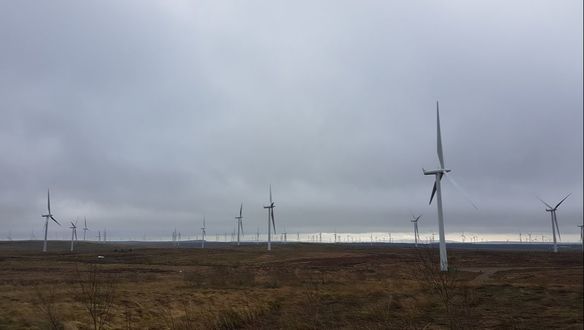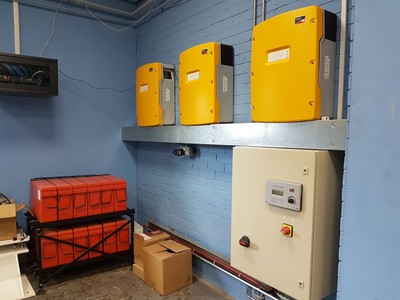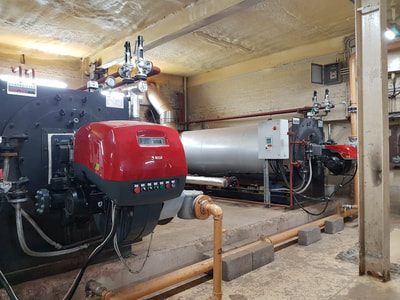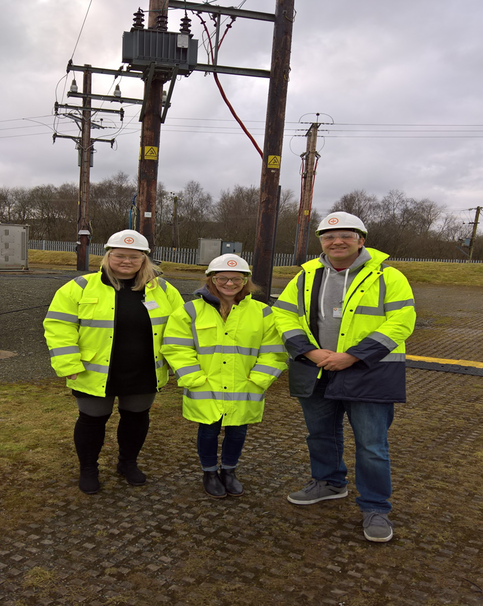Whitelee Windfarm
|
In the early research stages of the project, the group visited Whitelee Windfarm in Eaglesham. Shown in the picture above are some of the 215 Siemens and Alstom wind turbines which make up the largest onshore windfarm in the UK. It was noted that although a very windy day, very few of the turbines were operational. This was where the group first learned of the constraint payments made to wind farms to stop generating during times of oversupply.
|
Energy Technology Centre
The group then visited the energy technology centre in East Kilbride, where research for the low carbon energy sector is carried out. The centre obtains much of its energy from solar panels and a small wind turbine located outside of the building. The ETC are currently trialing lead acid batteries as a potential method of storing their surplus energy to be used at a time of higher demand, as opposed to exporting back to the grid. Following a meeting with Dr John Bingham, the group learned of a wind turbine test site which is co-located with Whitelee windfarm. Wind data was then obtained for this site and used as the basis for a small scale case study.
Power Network Demonstration Centre
|
During a visit to the PNDC, the group took a tour around the test facilities and learned about the key challenges associated with grid scale power distribution and the UK guidelines and testing procedures to ensure power quality is maintained.
The visit resulted in a greater knowledge of the supply-demand matching system, power quality and balancing mechanisms utilised by the National Grid to ensure high quality power delivered to consumers. Additionally the energy trilemma was discussed, which is a decision making method used by the National Grid when choosing which energy generation plants should be utilised. At PNDC they also tested a 7 module redox battery that was originally scheduled to be used on the Isle of Gigha as part of their power grid system but the battery tested was not actually implemented. |



